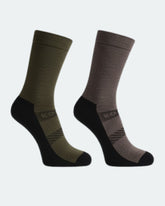Packing made Easy-Happy Trekking!
India is a diverse country, with an abundance of nature’s beauty in the form of mountains, rivers, islands and forests. For those who live in the metropolitan cities, an escape to the scenic natural locations helps to clear the clutter in their mind and bodies. We strive for fresh air, we yearn for bright blue skies, we surrender ourselves to nature and lose ourselves in India’s beauty, could be the mountains of Shimla, or the rivers of Kerala.
For those who seek adventure, in the form of trekking, mountaineering, river rafting, wildlife safaris or waterfall rappelling, India has much to offer. Being home to the majestic Himalayan ranges, India is every trekker’s paradise, apart from the Ghats in the east and west. The fresh, cold air at high altitudes, the thick green forests on the hillsides, and the surreal view from the peak of the mountain have captivated the trek lovers for decades. Adventure enthusiast Mr Jayesh Morvankar, Founder of Odati Adventures Private Limited, has walked thousands of kilometres in the Western Ghats, Himalayas from Nepal to Arunachal Pradesh and scaled many high peaks and passes, carrying his own backpack. With over 15 years of experience in this field, he has shared some valuable tips on how to pack for a trek.
Once you know you are going for a trek, you need to understand certain factors such as:
>Duration of trek
>Weather and terrain conditions of the trek
>Facilities available (As provided by organizer)
>Temperature around the time of the trek
Depending on the above-mentioned factors, one should be able to gauge on how to pack for the trek.
Choose an appropriate bag
While choosing a bag to carry for the trek, looks don’t matter. One must buy the right shaped backpack to avoid experiencing backache or sore muscles and enjoy the outdoors. The factors to be considered are:
>Storage volume
>Load distribution
>No. of compartments
>Padded hip belt and shoulder straps (to reduce pressure on back and shoulders)
>Padded back (for weight distribution)
>Water resistant material
>Hydration system
If it’s too big, you may not be able to compress the bag and things may move inside the bag constantly shifting the balance besides carrying the unnecessary weight of the bag. Too small and you’ll not be able to fit everything in and thus, will have things hanging out, again making it prone to imbalance or things getting snagged and flying outside. Choose the wrong material and you will find your things soaking wet in case of a sudden downpour. Hence, choose wisely. Jayesh feels the size of the backpack depends on the facilities available, as well as the duration. But most of all, it depends on the individual. “For a minimalist, a 40 Liter bag may suffice for a 15-day trek, if one knows how to pack exactly what one requires and if most facilities like sleeping bags, mats etc. are provided and carried by the operator. For example, washing and reusing clothes reduces the number of clothes to be carried”, is what he suggested.
Essential Packing List
Once you know the place and duration of the trek, you need to mentally prepare the list of things you require. The basic list which Jayesh prepares is as under:
- Clothes: Consists of T-shirts (breathable, full sleeves and short sleeves), Shirts (full sleeves) trekking pants (trousers), woollens (fleece and warmers), mufflers, Pullover Hoodie Sweatshirts for Men, shorts, quick-drying towel.

- Weather dependent gear: Snow proof jackets, raincoats, windcheaters, waterproof ponchos, caps, sunglasses.
- Footwear: Floaters, trekking shoes, Woolen Socks for Men (always carry extra pairs) (Woollen and cotton-padded)

- Essentials: Medical kit (including sun protection cream), food items, Electronic Kit (consisting of portable chargers, camera batteries, torch batteries, memory card, etc), reusable water bottle, walking stick (Trekking Poles).
You may add a sleeping bag if required.
Pack the clothes, toiletries and food items in Ziplocks separately in 6-7 packets. Pack the sleeping bag in a plastic bag.
Line your backpack with the large plastic bag to make it weatherproof
Pack the Electronics in a Wide-mouth hard PET bottle.
Fundamentals of Packing: Accessibility-Balance-Compression (ABC)
ACCESSIBLITY> This means one should know what to pack right on top of the bag, and what goes at the bottom. Least required items or less urgently needed things should be kept inside the backpack first. These items shall be least accessible initially. Vital things like a pocket knife, medical kit, food, wallet, torch, Windproof and Rain Poncho must be right on top so that they can be retrieved quickly.
BALANCE> This aspect ensures that the backpack does not move when strapped to your back. Internal compartments should be properly segregated and the ziplock sets should be snugly placed, to avoid movement. The ‘Sternum strap’ that covers the chest enhances stability. The shoulder straps and hip straps also ensure that the weight of the backpack is spread evenly throughout your back and reduces the strain on the spine and shoulders. The heavier portion of the backpack must be closer to the spine and the weight distribution is ideally 70% on the hip and 30% on the shoulder. Once the size and shape of the backpack are appropriately chosen for your body frame, achieving balance will be easier.
COMPRESSION> This aspect is to compress the backpack as a whole, not leave any gaps. If there are any gaps present, it must be filled (packed) with soft material (and not sharp jabbing items). Sharp, jabbing items must be wrapped in softer clothes to prevent damage to the pack during travel and walks. The entire backpack must be one unit, and after the straps are tightened, movement of the backpack should be restricted to a minimum. It should be firmly attached to your back.
Once you have all the above factors properly taken care of, you can experience worry and pain-free trekking. Utilize all your senses to take in the surreal sights and sounds, instead of walking with a backache! So happy trekking, readers with kosha!
Editor’s Picks
Men's Pack Of 2 Merino Wool Cushioned Technical Socks
- ₹2,076.00
₹3,580.00- ₹2,076.00
- Unit price
- / per
Woolmark Full Sleeves Thermal Top For Women
- From ₹1,255.00
- From ₹1,255.00
- Unit price
- / per
Woolmark Full Sleeves Thermal Top For Men
- From ₹1,890.00
- From ₹1,890.00
- Unit price
- / per
Women's Classic Merino Wool Crew Length Socks
- ₹1,014.00
₹1,690.00- ₹1,014.00
- Unit price
- / per
Women's Full Zipper Hoodies
- ₹2,800.00
₹5,600.00- ₹2,800.00
- Unit price
- / per













